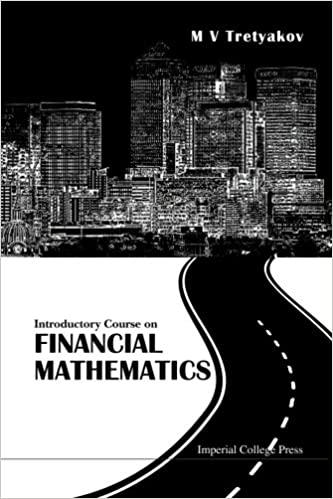Question
An entrepreneur has a choice of two mutually exclusive investment projects, Project A and Project B. Each lasts for one time period and the firm
An entrepreneur has a choice of two mutually exclusive investment projects, Project A and Project B. Each lasts for one time period and the firm has no other projects. Project A will result in a cash flow of 27 million in the good state and 10 million in the bad state. Each outcome is equally likely. Project B will result in a cash flow of 34 million in the good state and zero in the bad state. Each outcome is equally likely. Assume the entrepreneur is able to choose which project to undertake after the finance has been raised. Each project requires an initial investment of 6 million. Assume risk-neutrality and a discount rate of zero.
Assume for parts (a) to (c) that the investment is financed by debt. (a) If Project A is chosen, what is the expected value of the firm and the payoffs to the debtholders and the entrepreneur? (3 marks) (b) If Project B is chosen, what is the expected value of the firm and the payoffs to the debtholders and the entrepreneur? Which is the better project? Which one will the entrepreneur choose? (4 marks) (c) Assume the debtholders are fully aware of the firms possible investment choices. They decide to use a bond covenant to stipulate that the face value of the debt will be 9.2 million if the entrepreneur decides to take on the riskier project. Which project does the entrepreneur choose now? Is this different from your answer in part (b)? Why/why not? (5 marks) (d) Suppose the entrepreneur chooses instead to finance the project with outside equity. Which project will be chosen? What fraction of the projects payoff will the outside equityholders ask for? What is the payoff to the entrepreneur and the expected value of the firm? (5 marks) (e) Explain the risk-shifting (asset substitution) agency problem identified by Jensen and Meckling (1976), with reference to your results in parts (a) to (d). Is the solution to use as much outside equity as possible? Explain. (8 marks)
Please provide detailed answers, thank you!
Step by Step Solution
There are 3 Steps involved in it
Step: 1

Get Instant Access to Expert-Tailored Solutions
See step-by-step solutions with expert insights and AI powered tools for academic success
Step: 2

Step: 3

Ace Your Homework with AI
Get the answers you need in no time with our AI-driven, step-by-step assistance
Get Started


